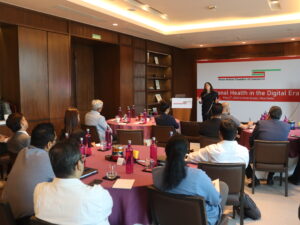Science of Mindfulness: How It Changes the Brain and Body
Science of Mindfulness: Mindfulness is not just a new trend but also a scientifically supported practice with real mental and physical health benefits. Just giving some minutes daily to mindfulness builds up your resistance and control of stress in a manner that makes life even calmer.
Understanding Neuroplasticity: How Mindfulness Changes the Brain
The brain is not static. It is constantly in a process called neuroplasticity. This makes it learn new skills, adapt to changes, and break bad habits. Mindfulness will tap into this power as it helps people create healthier thought patterns and responses to challenges. Scans on the brain reveal that repeated mindfulness practice strengthens specific areas of the brain to support positive thinking and resilience.
Strengthening the Prefrontal Cortex with Mindfulness
This part of the brain is known as the “thinking part” of the brain, where critical thinking, decision-making, and self-control occur. Mindfulness enhances grey matter density in this area, thus helping people focus better, improve memory, and regulate emotions. A developed prefrontal cortex allows people to be calm and weigh the options even in the midst of pressure while making thoughtful decisions. The actual science of mindfulness is very important to understand.
Emotional Regulation: How Mindfulness Controls the Emotions
The amygdala is the brain’s emotional processing centre and also its stress activator. Mindfulness reduces the reactivity of the amygdala. When we encounter a potentially stressful stimulus, the amygdala naturally causes a reaction that should prompt either running away or fighting, that is rapid, sometimes senseless reaction. Mindfulness reduces the activity in this part, enabling a stress response less emotional and very rational.
This emotional balance is valuable in everyday life, helping us navigate challenges without overreacting. Over time, mindfulness practice trains the brain to respond to stress with greater control, strengthening emotional resilience and fostering healthier relationships.
Stress Reduction: The Benefit of Mindfulness
Stress is very common in the fast world of today, and it often shows itself in our minds and bodies; thus, practice that aims at stress management, through focusing on the present moment while viewing associated challenges more objectively, might be considered the case for breaking negative thought cycles that amplify the effects of stress on our health and body.
One of the most commonly produced hormones due to stress is cortisol. Although cortisol makes it possible for us to quickly respond to potential dangers, elevated levels over a prolonged period can lead to some serious problems such as obesity, weakened immune function, and even heart disease. The relaxed state, both physically and mentally, achieved by practicing mindfulness lowers the cortisol level.
Mindfulness and Physical Health
While often acknowledged for its mental health benefits, mindfulness also supports physical health. A research study indicates that practicing mindfulness may improve cardiovascular health, sleep quality, and functioning of the immune system. These all lend value to incorporating mindfulness into a healthy lifestyle.
The Science of Mindfulness and Heart Health
Chronic stress is a risk factor for high blood pressure and heart disease. Mindfulness helps manage this risk by promoting relaxation and reducing the body’s stress response, which can help lower blood pressure. Practicing mindfulness often encourages healthier choices, such as balanced eating, regular exercise, and quality sleep—all of which contribute to heart health. For example, mindful people are more likely to be aware of what they eat and thus likely to make healthier food choices. Along with the reduction in stress brought about by mindfulness, it promotes a healthier heart and reduces the risk of stress-related diseases.
Better Sleep through Mindfulness
Good sleep is part of health, but stress and an overactive mind are reasons many are not experiencing it. Mindfulness tends to quell racing thoughts, making people fall asleep fast and then sleep well. Studies found that individuals who practice mindfulness experience better quality of sleep, fewer disturbances at night, and wake up feeling alert and refreshed during the day.
Reducing the causes for sleep disturbances, mindfulness encourages a calm mind with a relaxed state to welcome restful sleep and awaken refreshed and focused. The Power of Mindfulness on the Brain and Body The science of mindfulness points out its benefits for both the mind and the body. It enhances the prefrontal cortex, calms the amygdala, and decreases cortisol levels, thus helping us to cope with stress better.
These mental benefits also support physical health by improving cardiovascular function, enhancing sleep, and boosting the immune system. Through mindfulness, we bring this aspect into our lives, which has far-reaching benefits on our general wellness. From brief moments of awareness to dedicated practice, each mindful moment leads toward a healthier and more balanced lifestyle. Incorporating mindfulness doesn’t require drastic changes to your routine—just a few minutes each day can make a noticeable difference.
Mindfulness is a skill anyone can develop, offering lifelong benefits that improve mental and physical health, creating a life filled with greater peace and clarity.








